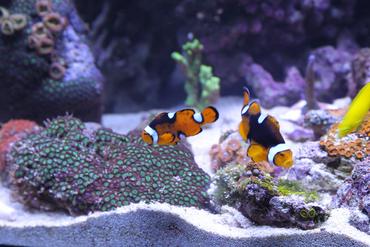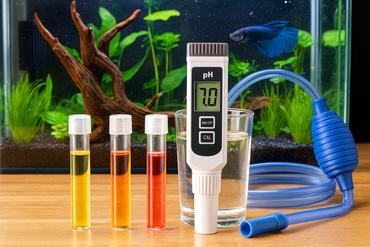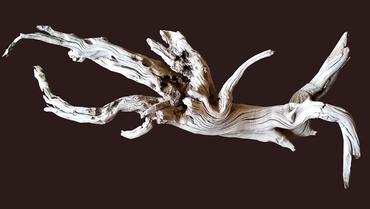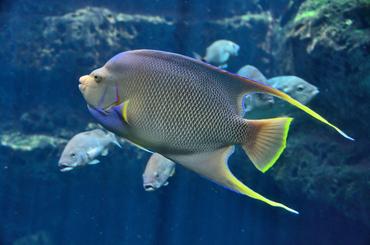SALTWATER AND REEF TANK CYCLING

Before adding your first clownfish or coral, your saltwater aquarium must go through a vital biological process called cycling. The nitrogen cycle establishes beneficial bacteria that convert toxic waste into harmless compounds, creating a safe environment for marine life. This guide explains how to properly cycle a saltwater or reef tank using today’s best methods — no unnecessary fish or guesswork required.
What Is the Nitrogen Cycle?
The nitrogen cycle is the foundation of every aquarium’s ecosystem. When fish eat, they produce waste, which releases ammonia — a deadly toxin. Bacteria naturally develop to convert ammonia to nitrite, then to nitrate, which can be safely removed through water changes or filtration.
- Ammonia (NH₃): Produced from fish waste, decaying food, and organics. Highly toxic even in small amounts.
- Nitrite (NO₂⁻): Intermediate compound; also harmful to fish and corals.
- Nitrate (NO₃⁻): Final product; relatively safe at low levels (<20 ppm).
Without this bacterial balance, any added fish or coral could die within days. Understanding this process is critical before you start.
Traditional vs. Modern Cycling Methods
In the past, aquarists used “fish-in cycling,” introducing hardy species to generate waste for bacterial growth. Today, this practice is discouraged because it exposes fish to harmful toxins. Modern fishless cycling is faster, safer, and easier to control.
- Bottled bacteria: Products like Dr. Tim’s One & Only, Fritz TurboStart, and Bio-Spira contain live nitrifying bacteria that jump-start the cycle.
- Ammonia dosing: Add a small, measured amount of pure ammonia to feed bacteria without harming livestock.
- Live rock or live sand: Natural sources of beneficial bacteria that accelerate cycling.
For a visual overview of this process, see our general aquarium cycling guide.
Step-by-Step: How to Cycle a Saltwater Tank
Follow these steps to safely establish your marine tank’s biofilter:
- Step 1 – Setup: Assemble your tank with substrate, saltwater (SG 1.024–1.026), and filtration. Start the heater and circulation pumps.
- Step 2 – Seed bacteria: Add bottled bacteria or a small piece of cured live rock to introduce microorganisms.
- Step 3 – Add ammonia source: Dose pure ammonia (2–3 ppm) or add a pinch of fish food to feed bacteria.
- Step 4 – Test regularly: Use test kits every few days to track ammonia, nitrite, and nitrate levels.
- Step 5 – Patience: The cycle typically takes 2–4 weeks. Once ammonia and nitrite read zero for consecutive days, your tank is cycled.
Optional: Run your protein skimmer and lights as normal to simulate final conditions — this helps stabilize the environment early.
Cycling a Reef Tank with Corals
Reef tanks need extra care during cycling. Corals and invertebrates are highly sensitive to ammonia and nitrite, so they should never be added until cycling is complete.
Modern reef keepers often “dry cycle” their systems using dry rock and sand, then introduce bacteria and ghost-feed until nitrates appear. After full cycling, perform a 25–30% water change to lower nitrates before adding any livestock.
Corals can be introduced gradually, starting with hardy species such as Zoanthids, Green Star Polyps, and Mushroom Corals. Once parameters remain stable, you can move on to more sensitive species.
How to Tell When the Cycle Is Complete
You’ll know your saltwater tank is ready for life when these conditions are met:
- Ammonia: 0 ppm
- Nitrite: 0 ppm
- Nitrate: 5–20 ppm
- pH: 8.0–8.3
To confirm, dose ammonia again and retest in 24 hours. If ammonia and nitrite both read zero, your biofilter is established and stable.
Common Cycling Mistakes
Even seasoned aquarists make errors when cycling. Avoid these common pitfalls:
- Adding fish too soon — this can cause toxic spikes and unnecessary deaths.
- Cleaning or replacing filter media too early — it removes developing bacteria.
- Skipping test kits — cycling requires consistent monitoring.
- Using untreated tap water — chlorine and chloramine kill bacteria instantly.
For more troubleshooting help, visit Common Beginner Mistakes on RateMyFishTank.com.
Compatibility and Livestock Considerations
Once your cycle completes, choose hardy, beginner-friendly species to start. Gradually add fish in small groups to avoid overloading your new biofilter.
- Best starter saltwater fish: Ocellaris Clownfish, Firefish Goby, Royal Gramma, and Yellow Watchman Goby.
- For cleanup crew: Nassarius snails, hermit crabs, and cleaner shrimp help maintain a healthy environment.
Introduce corals only after water parameters remain stable for at least two weeks. Avoid overfeeding during this stage to prevent algae blooms.
Maintaining the Nitrogen Cycle
Even after the cycle is complete, maintaining balance is a continuous process. Beneficial bacteria live primarily in your filter media, substrate, and rockwork. To keep them thriving:
- Rinse filter media in old tank water (never tap water) during maintenance.
- Perform regular 10–20% weekly water changes.
- Feed sparingly and remove uneaten food.
- Use a protein skimmer to control waste and maintain high oxygen levels.
Stability is more important than perfection. Avoid large parameter swings and always test before adding new fish or coral.
Takeaway: Patience Leads to Success
Cycling is the most important step in setting up any saltwater or reef aquarium. By giving your tank time to establish beneficial bacteria, you ensure a safe and healthy home for your marine life. Use modern fishless cycling techniques, monitor progress with test kits, and resist the urge to rush. With patience and proper preparation, your saltwater tank will reward you with long-term stability and vibrant life.

































































































